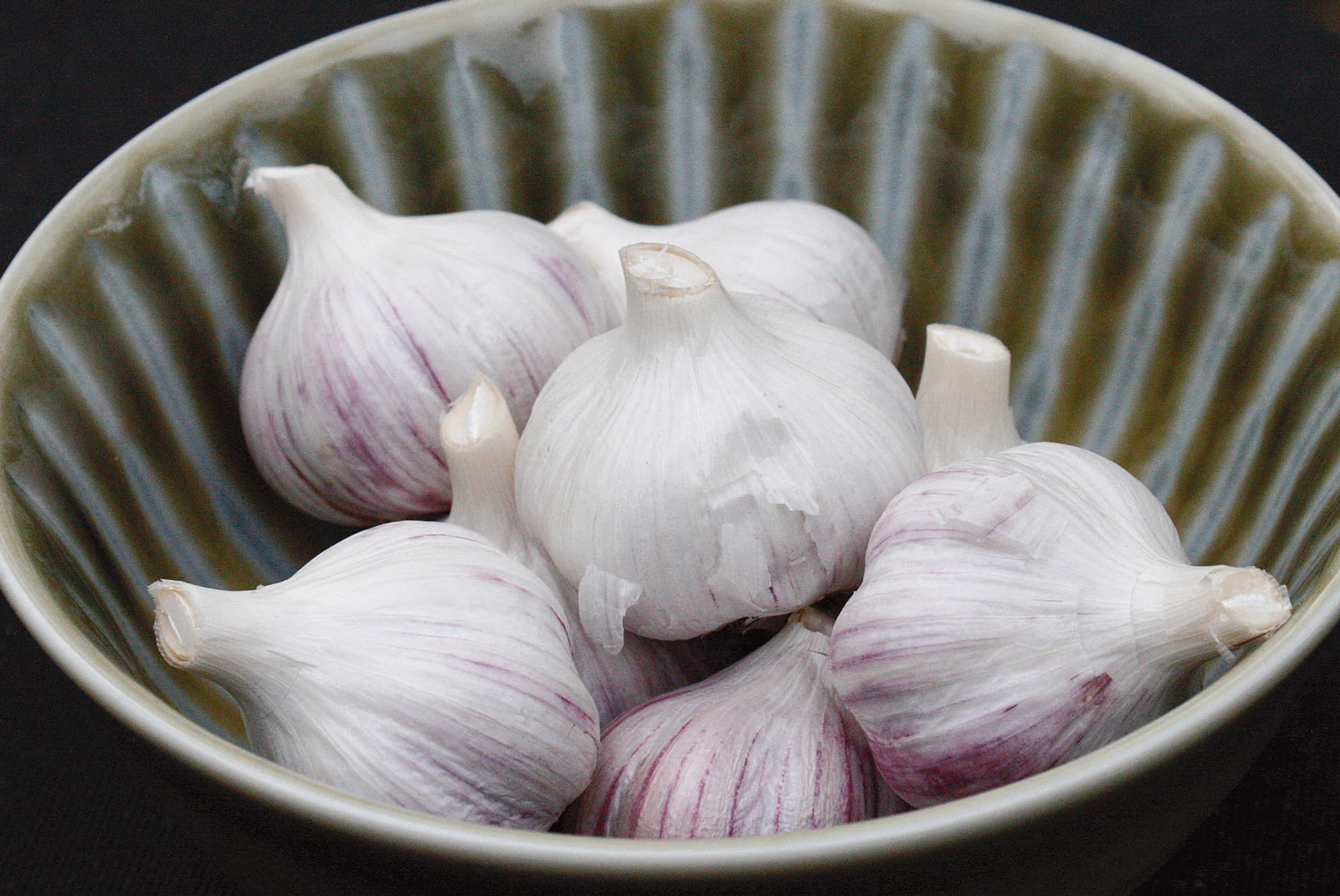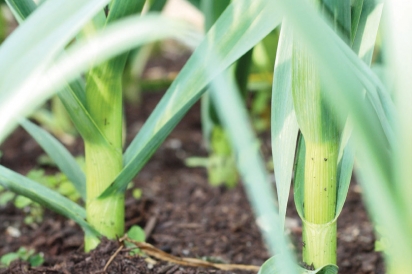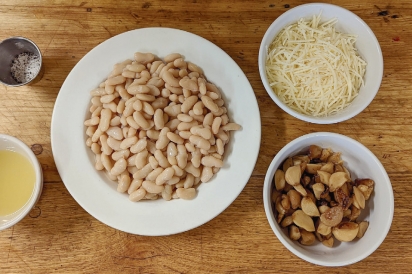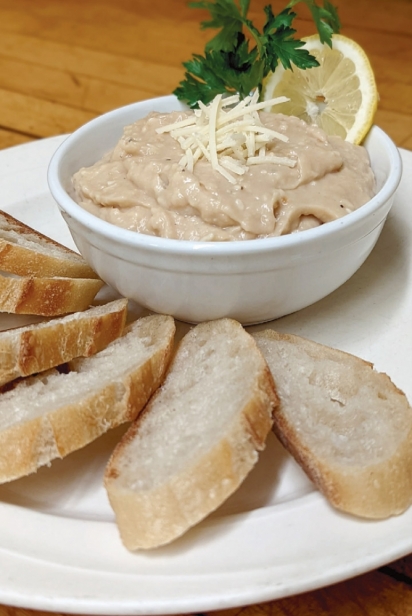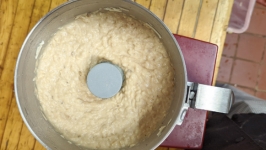A Little Kitchen Chemistry
Garlic. I’d like you to take a minute and go back through the murk of your movie history and recall when a young soldier during the Vietnam War was scrubbing a floor and describing all the versatile ways that shrimp could be prepared. “Grilled shrimp, boiled shrimp, shrimp étouffée, BBQ shrimp…” And on.
Bubba captures the essence of cooking in a way that many cooking shows don’t. There is versatility in ingredients that we as Americans tend to eat in only a couple of ways. If you like shrimp and you consume it, I’d be willing to bet you eat it the same half-dozen ways, over and over. It’s the same with your steak or chicken or pasta. We get into a pattern that is hard to break out of. It’s why so many people like to go to restaurants. To try something new. To break out of their food habits. It’s the versatility of almost every food that needs to be explored.
Before we talk about garlic, I need to confess something. I am not a formally trained chef. What that means to me is that many of the basic chemical processes that happen in food I didn’t know about until I was well into my cooking career. I knew that if I let a piece of fish sear on a hot pan for a few minutes, then eventually the meat would become golden brown, caramelized, and no longer stick to the pan. I knew this through years of practice and working with chefs better than myself. I did not know this was due to something called the Maillard reaction, a complex series of physical and chemical reactions that occur at the molecular level. Once I did learn that, my cooking improved greatly. Understanding the underlying chemical, physical and molecular aspects of what you are doing improves the process of cooking.
Garlic is a chemical joy. We are going to talk about the standard garlic here. I do not recommend that you purchase Elephant Garlic to save time. You don’t save that much and the flavor is nowhere near as good as regular garlic. If possible, you should try and grow some. Planted in the fall, it comes up in the spring and the scapes (the flower of the plant) are delicious themselves. It’ll be ready to harvest by July. Otherwise, you should buy it two ways. In a “head”, where the garlic cloves are together still in the ball in which they grew, and you have to peel it. This stores better both in the refrigerator or out on the counter. The other way is whole peeled garlic, now generally available at most supermarkets. Only buy whole peeled garlic in small batches and try to use it quickly. You can grind it and save it in a small airtight container but it won’t last long. Never buy the minced garlic in a jar. It’s only “garlic” by using the term very generously. Never cover your garlic in oil. It creates an anerobic environment that can cause some bad stuff to happen. (Remind me one day to tell the tale of a Christmas in which I gifted everyone bottles of garlic-infused oil that I did not prepare the correct way. It’s a fabulous, horrifying story.)
Now chemistry. Garlic contains a large amount of sulfur compounds. These compounds are what give garlic its distinctive aroma, and then give your breath, sweat, skin and gas a distinctive aroma as well. In its raw form, an enzyme called allicin is formed when the cells of garlic are breached. That enzyme and the sulphur compounds work in your digestive system to create hydrogen sulfide gas which can clear a room if allowed to escape. Raw garlic is complicated and joyous all at the same time and is used in almost every cooking culture on earth. Eaten as a medicine, pickled, chopped into every cuisine, used in tzatziki, hummus, garlic relish, guacamole, salads, it is the king of flavor addition.
Now take that garlic and cook it. At a certain temperature the enymes are broken down. The sulfur is reduced and taken over by sugar. Roasted garlic, garlic confit, garlic jam, and sautéed garlic all present a completely different flavor profile from the raw form. Don’t burn it! Overcooked garlic does not taste good. Cooked properly, the sugars are allowed to caramelize, and it can be transcendent.
The knowledge of the difference between the enzymatic flavor of raw garlic and the abundant sugary flavor of roasted garlic is a powerful one. Knowing that the enzymes can overwhelm the flavor of a freshly-picked heirloom tomato allow you to use just the right amount. The sugary roasted garlic allows you to make a dip that borders on dessert.
I love garlic. It is absolutely a staple in my kitchen and now that I am no longer sailing regularly, it is something that I will grow in my garden next to the asparagus and horseradish. I have seen the way the Turks eat it, they let the skin turn black as midnight and then scoop the cloves out of the paper and spread it on bread. The Chinese let it ferment than add it to fish dishes at the last minute. The Italians slow roast it and make a simple garlic paste so lush and sweet with olive oil, I was tempted to put it on ice cream. I’ve been to the great garlic fields of Salinas, California and seen the acres and acres dedicated to this amazing, versatile allium. I’ve walked in the woods and gathered the greens of wild garlic, to see them quick sautéed and served with a braised lamb. I watched a chef in Asheville, North Carolina tempura-fry garlic blossoms and serve them with tamari sauce. I’ve eaten roasted garlic ice cream that was amazing.
Do. Not. Be. Afraid. Experiment. Try new things and explore different flavors and textures. If it comes out terrible, so what? You still learned something. Cooking is like that. Once you have the basics down pat you can do almost anything. Enjoy your garlic!


